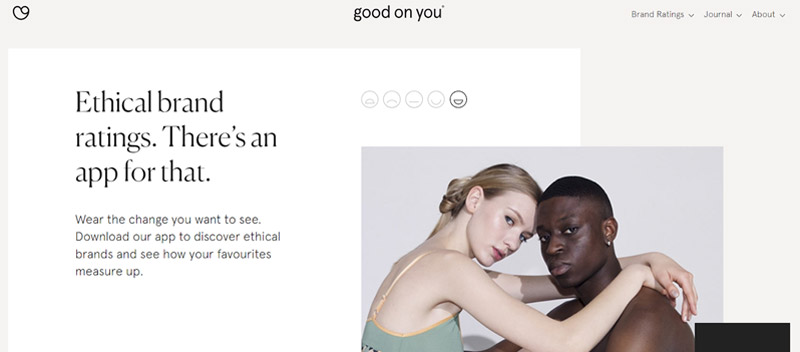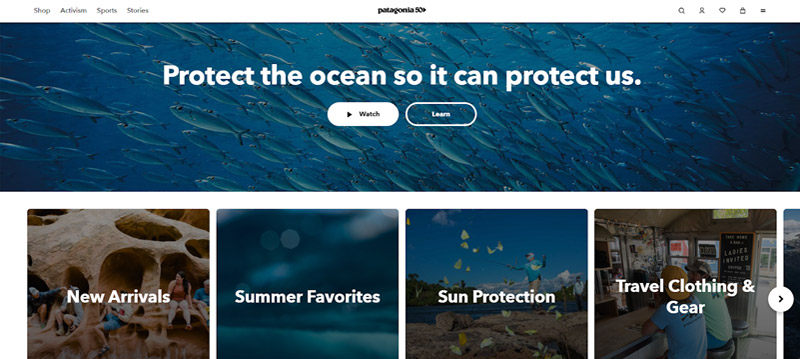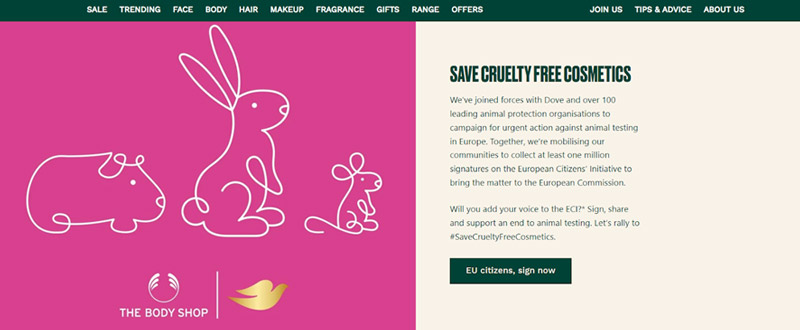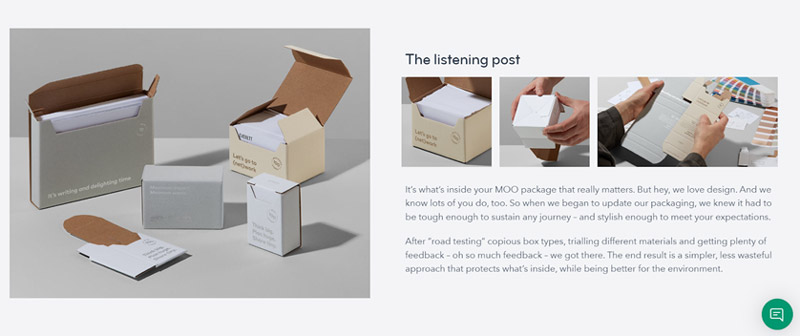Branding Ideas To Drive Sustainable Startups

Featured Image: Freepik.com/pikisuperstar
Sustainability. What is the first thing that comes to mind when you come across this term? Green, eco-friendly, or preservation? Maybe, something along those lines. Today, sustainability, or sustainable living has become quite mainstream. Businesses, industries, and individuals across the globe are striving to incorporate mindful practices to preserve the resources of the planet.
If you think about it, many SMB and startup owners, as well as big brands are shifting towards sustainability, and they want to highlight it for the audience too. But here, I want to focus on startups and small businesses. So, let’s talk about branding ideas to drive sustainable startups.
What is Sustainable Branding?
There must be a better way to make the things we want, a way that doesn’t spoil the sky, or the rain or the land.” – Paul McCartney
Sustainable branding is the process of creating a strong brand identity that highlights the eco-friendly and socially conscious values embodied by a business. Before you start wondering where am I going with this, let’s delve into a few details.
Many brands and sustainable startups that practice sustainability strive to highlight it in their branding strategies. Today, people have also become conscious about their choices and actively look for sustainable brands to engage with. Business Wire has found that 60 percent of consumers consider sustainability as an influential factor when making a purchasing decision.
So you will find businesses incorporating soothing colors, nature imagery, and minimalist brand designs, particularly logos, websites, and product packaging. With appealing visual elements, SMBs and startups can gain recognition as sustainable brands.
When businesses or brands adopt such practices, they are making a conscious effort to reduce their carbon footprint and impact on the environment. Today, you will find quite a few sustainable startups, in industries like fashion, tech, and manufacturing.
I found this great example of a platform, Good on You, that features sustainable fashion brands for consumers looking to make conscious choices.

Image Source: goodonyou.eco
People can easily browse through options for clothing, shoes, basics, and accessories, and choose accordingly. Similarly, many startups are looking to build recognition and establish themselves as sustainable brands.
Top Branding Ideas to Drive Sustainable Startups
To help you get one step ahead of your competitors and drive your sustainable startups, here are the top branding ideas that could help you craft an effective strategy.
Pitch Your Selling Point
A good pitch is king. During the pandemic, I started watching Mad Men, an advertising drama with high-level executives pitching marketing strategies to clients. It showed how a good pitch that draws focus to the best selling points of a business can help everybody win.
As a sustainable startup, you want to highlight this too. You can incorporate your eco-friendly value and practices in your selling point and convey them to your stakeholders as well. This can help you connect with your target consumer quickly and execute a winning branding idea in your strategy as well.
What to Do
So how do you go about pitching your selling point? Well, let’s begin with the basics. Think about your product or service, and list down all the features that you think will appeal to your conscious audience.
When you decide to start a sustainable business, you have to research your product, industry, and competitors. Even if not extensively, you may have an idea of the gap in the market for eco-friendly goods or services. Once there is clarity on what you want to sell, you can start creating a roadmap to achieving your business goals. This is where the stakeholders come in.
When you launch a sustainable startup, you have quite a few factors to consider:
- Is there a problem or pain point that can be resolved with sustainable alternatives?
- How can I apply eco-friendly practices to manufacture my product or provide services?
- Will I be able to maintain a steady bottom line with sustainable solutions?
A clear roadmap can help you find answers to these questions and once you do, you can identify the selling point to pitch to your stakeholders. It is important to align your message with the customers, employees, investors, and vendors so you can create a cohesive branding strategy and build a strong presence in your industry.
Example
Take the example of Patagonia here. The clothing brand that specialized in outdoor apparel is popularly known for its sustainable practices. Everything about the brand says sustainability. Now, the company’s best selling point is its durable clothing, most of which is created from recycled materials.

Image Source: patagonia.com
And if you take a look at their website, logo, tone of voice, and marketing campaigns, you will find that Patagonia has pitched their selling point effectively. With engaging visuals, bold headlines, and brand colors like violet, blue, and hues of orange that represent the sky behind the mountain, this sustainable brand showcases what it has to offer successfully.
Collaborate with Eco-Conscious Influencers
If you are anywhere between the ages of 25 to 35 years or Gen Z, then you probably get your product recommendations from your favorite influencers on TikTok and Instagram. Even as a business or startup owner, you could be influenced by certain personalities on social media. Whether in fashion or lifestyle choices.
Now, it’s important to consider the impact of influencer marketing when it comes to branding for sustainable startups. This is what you have to leverage to create recognition and boost awareness with higher impressions, reach, and mentions on platforms like Instagram, Facebook, and TikTok.
What to Do
Before you start looking for collaborations or partnerships, you need to do extensive research in your niche to find micro-influencers that share the same values as your business. Research, again? Well, yes. Look at it this way.

Image Source: makeameme.org
What if you collaborate with an influencer who has a large following but a different voice or does not promote sustainability across all platforms?
Your campaign might not generate the desired results. Problem! So, it’s important to take your time and find micro-influencers who can represent your brand accurately. Here are a few tips that you can follow to make this easier:
- Find popular hashtags that are trending in your industry like fashion, beauty, or gardening
- Run a search for relevant hashtags like #microinfluencers #sustainableliving #sustainability and add your niche in the mix too
- Look for them manually on Google or Bing
- Check groups on Facebook or relevant blogs that have lists of micro-influencers with a following of more than 10k
Example
Sabrina Pare is a popular advocate of sustainability living on social media, mainly TikTok. She collaborates with eco-friendly brands and SMBs and actively promotes the lifestyle. Pare partnered up with Native Beauty, an eco-skincare company that uses all-natural ingredients in its products. Her video garnered a lot of interest and generated interest in the brand as well.
@sabrina.sustainable.life Reduce your plastic waste with @Native! Code SABRINA2 for 20% your first order #NativePartner #SwipeTheSwap #ecofriendlyproducts #ecofriendly ♬ Peace – Official Sound Studio
Leverage User-Generated Content
One of the most important factors to keep in mind here is community engagement for brand-building. Now, there are quite a few ways to do that like implementing UGC (user-generated content) campaigns or partnering with similar businesses. Here, I want to focus exclusively on user-generated content.
This is a powerful strategy in branding and involves direct engagement with customers or users. You, as a sustainable startup owner, can leverage the content created by people to draw attention to your brand, its products, and its services.
The rise of social media platforms has provided businesses with the opportunity to reach out to their customers quickly and find out what they think of the brand.
Find where your audience is located and reach out to users and micro-influencers to create a UGC campaign.
What To Do
To create a successful user-generated content campaign, you will need to invest considerable time and effort. But it can certainly pay off, and in a big way. According to a study by TurnTo Networks, 90 percent of consumers have reported that they have been influenced by UGC at one point or another.
So, you can leverage its power and execute campaigns that generate comments, reviews, and traffic to your website as well. Here are some factors to consider for user-generated content:
- Create a list of key influencers that promote sustainable values
- Start a contest or giveaway with a hashtag
- Reach out to users and influencers with an incentive
- Track the performance
Such content serves as proof of customer satisfaction and positive experiences. When users voluntarily share their feedback, testimonials, or creative content featuring your brand, it enhances your credibility and builds trust among potential customers.
User-generated content fosters a deeper level of engagement with your audience. It allows them to express their creativity, share their stories, and interact with your brand. UGC also brings an element of authenticity as it reflects real-life experiences and perspectives.
Example
Allbirds, a sustainable shoe and clothing brand, launched the #weareallbirds campaign in 2020. The brand encourages customers to share content with their products and use the hashtag in their posts as well.
Many people tagged Allbirds on social media networks which allowed the business to share it on their accounts or profiles and create a sense of community among their customers. The brand leveraged UGC to create interest and promote sustainability.

Image Source: instagram.com
Align Your Brand with a Cause
Cause-related marketing is a powerful approach that enables businesses to align their brand with a social or environmental cause. It involves partnering with nonprofit organizations or social initiatives to create mutually beneficial campaigns that drive positive change while also benefiting the business.
According to a report by PWC, around 77 percent of consumers factor in the environmental and social impact of a company before buying products from there. Now, this is a big number that could help take your sustainable startup to the next level.
Successful cause-related marketing campaigns involve selecting a cause that aligns with your brand values and resonates with your target audience. By choosing a cause that reflects your brand’s purpose and mission, you can build a meaningful connection with your customers and enhance your startup’s reputation.
What to Do
This marketing strategy provides an opportunity to tell powerful stories that connect with your audience on an emotional level. By showcasing the impact of your brand’s involvement in a cause, you can engage customers and inspire them to support your business.
Transparency is essential in cause-related marketing to maintain trust and credibility. It’s crucial to ensure that your partnership with a cause or nonprofit organization is genuine and meaningful. By being transparent about your contributions and the impact of your campaign, you can build credibility and strengthen the connection with your audience.
When done authentically and transparently, cause-related marketing can create a win-win situation where your business thrives, and social or environmental causes benefit.
Example
The Body Shop, a cosmetics company, has been a strong advocate for ethical and sustainable practices. Their “Forever Against Animal Testing” campaign highlights their commitment to cruelty-free beauty and resonates with consumers who value animal welfare. Through compelling storytelling, The Body Shop has been able to create a loyal customer base and drive positive change.

Image Source: thebodyshop.com
Choose Eco-Friendly Marketing Materials
Engaging in sustainable packaging and marketing materials is a powerful way for sustainable startups to align their brand values with their environmental commitment. Today, you can find many examples, especially sustainable packaging designs in the cosmetics industry, making a difference in the world.
What to Do
Here are some key strategies to incorporate sustainable packaging and marketing materials into your branding efforts:
- Eco-friendly materials: Opt for packaging and marketing materials that are recyclable, biodegradable, or made from sustainable sources. Choose elements like recycled paper, cardboard, or plant-based bioplastics to reduce environmental impact.
- Minimalist design: Embrace minimalist design to reduce material waste and create a clean and visually appealing brand image. Keep packaging simple, focusing on essential information and avoiding unnecessary embellishments.
- Informative labeling: Communicate the sustainable features and benefits of your packaging on the labels. Use icons or symbols to highlight eco-friendly attributes such as recyclability, compostability, or reduced carbon footprint.
- Reusable and refillable options: Explore formats that can be reused or refilled, offering customers a sustainable alternative to single-use packaging. This encourages a circular economy approach and enhances customer loyalty.
- Collaborations with vendors: Work closely with packaging suppliers who share your sustainability goals. Collaborate to develop custom packaging solutions that align with your brand values and meet your sustainability criteria.
By actively engaging in sustainable packaging practices, you can showcase your commitment to environmental responsibility, attract eco-conscious consumers, and contribute to a more sustainable future. Incorporating these strategies into your branding efforts will help your sustainable startup stand out and create a positive impact on both your customers and the planet.
Example
One example of a brand that utilizes sustainable packaging and marketing materials is Moo. It is a printing company that offers eco-friendly options for business cards and stationery. They are committed to minimizing their environmental impact by using sustainable materials and practices throughout their production process.
Moo offers a range of sustainable paper options for business cards, including recycled paper, FSC-certified paper (from responsibly managed forests), and paper made from cotton offcuts. They also use vegetable-based inks and water-based coatings, which are more environmentally friendly compared to traditional petroleum-based inks and coatings.
Moo’s commitment to sustainable packaging is also known among its customers. They use packaging materials that are either recyclable, made from recycled content, or sourced from sustainable forestry practices. They prioritize reducing waste and provide information to customers on how to properly recycle their packaging materials.

Image Source: moo.com
Wrapping Up
These are some branding ideas to drive sustainable startups. If you are looking to launch a business soon, then it’s a good idea to get started on your branding strategy right away.
You can consider a logo design contest to get a relevant brand symbol for business and establish a presence across digital and print mediums. Make sure that you choose the right colors, font styles, and imagery for your web presence or e-commerce store. And maintain consistency across all platforms.


